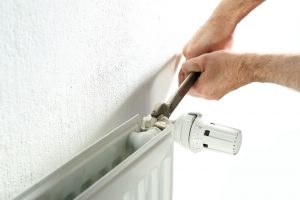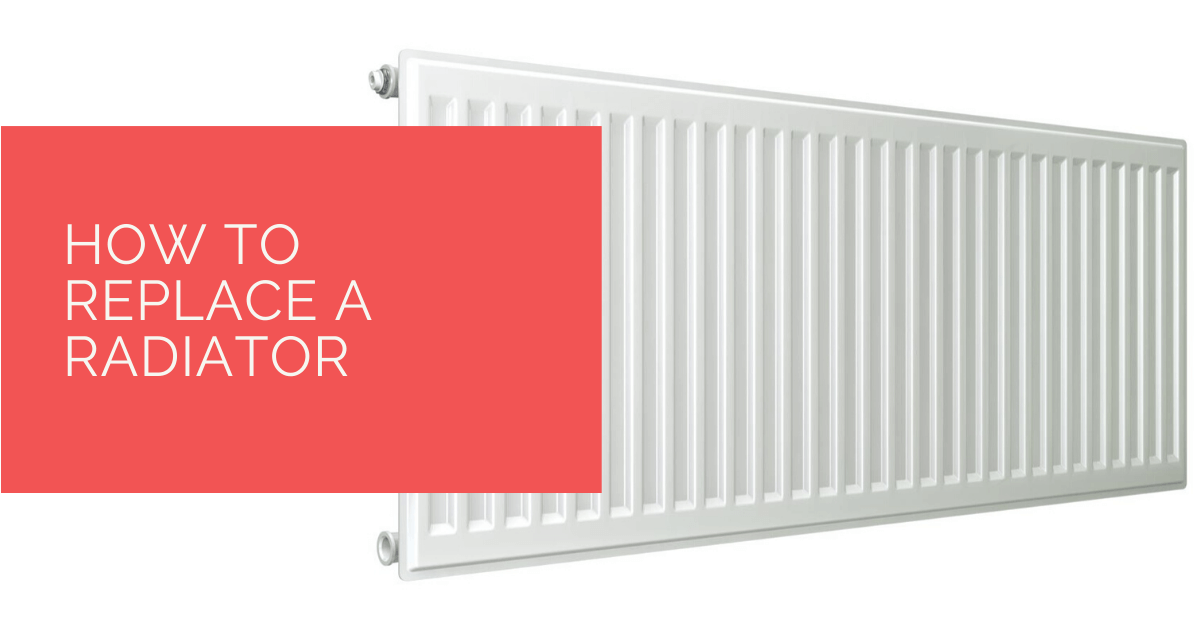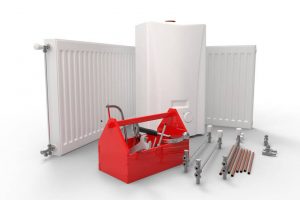If you want to remove your current radiator and replace it so you prevent damage to your central heating system, then you need to know how to do it. This step-by-step guide is going to teach you specifically this. When a radiator no longer works, it needs to be removed and replaced so you have reliable home heating and lower energy bills.
Contents
A Word Of Caution
Radiator replacement isn’t for novice DIY’ers, but those who have good experience in handling plumbing matters can certainly try it out. If you don’t feel this is in your skill range, consider contacting a qualified plumber.
The Materials And Tools You Need
Obviously, you’re going to need a new radiator, but there are other things you need to. The following is the minimum list, and having a pair of spare hands to help you is something you should add if you can.
- A pair of adjustable spanners
- A radiator bleed key
- A washing-up bowl or drain down kit
- A drill: Masonry walls need a hammer drill, while internal walls need a drill driver
- Cable/pipe/stud detector
- Steel wool
- A masonry drill bit
- PTFE tape/thread seal tape
- Rags or cloths for spills
- New radiator brackets

Before You Get Started
You need to investigate the wall that you plan on installing your radiator on before you start any work. If you find any crumbling plaster bits or cracks in the masonry, then you might should work some repairs to the wall into your removal and replacement project.
What Sort Of Walls Are Around You?
If you have brickwork or masonry walls, then you have many different radiators you can pick from. Blocks and bricks connected with cement make for strong walls, so if you use the right brackets and fixings, then you can mount a big radiator nearly anywhere you want on the wall.
On the other hand, if you have studwork walls, then you’re probably dealing with plasterboard that has a hollow space behind it. You have to find the precise locations of the noggins and studs, which are vertical and horizontal lengths that the plasterboard was originally attached too. A digital detectors is very useful here. Plasterboard studs are the stronger parts of the wall, which means you have to attach a replacement radiator to these for the most stability and safety. The stud locations can limit the kinds of radiator materials, shapes, and sizes that you can use safely in your available space.
The Shortlist Of Steps
If you’d like the short version of the radiator replacement steps, they can be broken down into just 10 steps. Here they are:
- Turn off the heating so you can isolate the radiator
- Place the washing-up bowl underneath the radiator valve
- Find the radiator bleed nipple and open it. Then, loosen the connection between your radiator and its valve so water starts feeding into the washing-up bowl
- Lift the radiator up. Remove any of the remaining water still in the radiator
- Remove all the valve connectors. Clean them
- Use PTFE tape to wrap all the valve connectors about a dozen and a half times
- Screw the valve connectors in. Re-connect the radiators to the overall system
- Make sure that every connection is secure without drips or leaks
- Turn your heating back on
- Enjoy the comfort and warmth that your new radiator gives you
Removing And Replacing A Radiator
If you want to seriously simplify the process, then pick a new radiator whose pipe centres are identical to your old one. This is the distance in between the pair of water pipes. Should you choose one with a different shape and size, then you have to drain the whole system down and make pipework alterations. That isn’t actually overly complicated, and it gives you more radiators to pick from. Still, it’s more work, and a variety of different safety regulations make come into play.
Phase One
You start off with turning off your central heating. Then shut off the valves at either end of your radiator in order to isolate it. Turn your manual valve clockwise until it won’t turn anymore. If your radiator has a thermostatic radiator valve, or TRV, then turn it as far as you can to the OFF position or past zero. If your radiator has a lockshield valve, then just use an adjustable spanner to remove the plastic shield. As you turn the shaft clockwise, count how many turns you make so that your new radiator can be set for the very same flow rate.

Phase Two
Put your washing-up bowl underneath the valve to catch any draining water. Grab your adjustable spanner once more so you can loosen up one of the cap nuts connecting your radiator to its valve. It might be necessary to have a second spanner handy in order to keep the valve body secure, so you can prevent the valve from doing any undesired turning and buckling the pipework.
Phase Three
Open up the bleed valve near the top of the older radiator, and then loosen up the cap nut that’s in between the radiator and the valve so you can drain water into the bowl.
Phase Four
Life up the radiator from the mounting brackets. Tilt it to drain out the remaining water, and if the radiator is big enough, this is where a second set of hands is very useful.
Phase Five
Carefully use your adjustable spanner to remove any valve connectors remaining on your older radiator. Clean them with steel wool and then wind PTFE tape around all the threads up to 10 times in order to create a safely watertight seal. Screw these connectors onto your new radiator and tighten them in full before hanging your radiator on your wall.
Connect your valves and then reset them. Use the identical number of turns that you measured earlier, and the let the water start going into the radiator. Now is the point where you need to open up the radiator bleed valve ever so slightly; this lets air escape so your radiator fills up better. When you see water bubbling or spurting out of the bleed nipple, it’s time to close it again. Check every joint and valve for leaks, drying and tightening as need be. Then, turn your central heat back on and do another drip check.
Heat Pump Source: Reliable Heating and Cooling Solutions
At Heat Pump Source, we take pride in our unwavering commitment to serving the UK with top-tier HVAC solutions. From the efficiency of heat pumps and the cool relief of air conditioning to the warmth of boilers, radiators, and underfloor heating, our dedicated team is always at the forefront of innovation. We understand the unique needs of every household and business, and we strive to provide dependable health and cooling products and services that are tailored just for you. Ensuring your comfort and satisfaction is our utmost priority. Whether you have questions, need guidance, or require support, we’re always here to assist. Please don’t hesitate to contact us; we’re eager to be of service.
About the Author
At Heat Pump Source, our articles are the product of a collaborative effort among a team of highly skilled HVAC experts. Our dedicated professionals, hailing from diverse backgrounds in heating, ventilation, air conditioning, and refrigeration, contribute their extensive knowledge and experience to every piece of content. This multidisciplinary approach ensures comprehensive coverage. Our commitment is to deliver authoritative, reliable, and tailored advice to meet the unique needs of every household and business across the UK.


